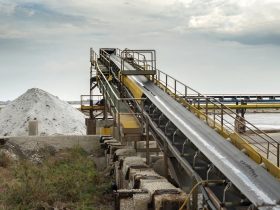As sustainability becomes a strategic priority for global businesses, supply chain operations are under growing scrutiny for their environmental impact. From production and packaging to transportation and delivery, every element of the supply chain contributes to carbon emissions. Today, data science has emerged as a powerful tool to understand, measure, and ultimately reduce this carbon footprint. Businesses are leveraging advanced analytics, machine learning, and AI to optimise logistics, improve forecasting, and identify energy-efficient alternatives. For aspiring professionals aiming to contribute to greener practices, data scientist classes now frequently include modules focused on environmental data analytics.
The Carbon Challenge in Supply Chains
Supply chains are inherently complex and global. A single consumer product may involve raw materials from one continent, manufacturing in another, and shipping across multiple countries before reaching the customer. This complexity often leads to inefficiencies—longer transport routes, suboptimal inventory management, and energy-intensive production—all of which add to carbon emissions. According to the World Economic Forum, supply chains account for more than 50% of many companies’ total carbon emissions.
Reducing the carbon footprint of supply chains is not just about corporate social responsibility; it’s now tied to regulatory compliance, investor expectations, and consumer demand for sustainability. Businesses must transition from reactive to proactive carbon management, and data science is key to making that transition.
How Data Science Enables Sustainability?
Data science offers a systematic approach to identifying carbon-intensive activities and optimising them. Through real-time data collection, statistical modelling, and machine learning, organisations can make data-driven decisions that lead to both cost savings and reduced emissions.
Here are some of the key ways data science contributes to carbon footprint optimisation:
1. Carbon Emissions Tracking and Reporting
Companies now collect vast datasets from IoT sensors, GPS trackers, and ERP systems that track energy usage, fuel consumption, and production metrics. Data scientists build models that aggregate and analyse this data to calculate accurate carbon emissions at each stage of the supply chain. This data is essential for transparent carbon reporting, a growing requirement for businesses under international sustainability frameworks like the GHG Protocol and ESG disclosures.
2. Route Optimisation and Logistics Efficiency
Transportation is one of the most significant contributors to supply chain emissions. Data science techniques like predictive analytics and optimisation algorithms can help companies plan more efficient delivery routes, reduce idle times, and minimise fuel usage. Machine learning models can even adapt in real-time based on weather, traffic, and inventory levels to ensure minimal environmental impact.
3. Demand Forecasting and Inventory Optimisation
Overproduction and excess inventory contribute significantly to emissions due to increased energy consumption and waste. Using data science, businesses can improve demand forecasting, reducing the need for emergency shipments and excess stock. This allows companies to balance supply and demand more effectively, improving sustainability as well as profitability.
4. Supplier Sustainability Evaluation
Another critical area is evaluating suppliers based on their environmental impact. Data scientists can use natural language processing (NLP) and web scraping techniques to analyse public data, certifications, and ESG scores to identify suppliers that align with green supply chain goals. Businesses can then build sustainability into their procurement decisions.
5. Energy Consumption Optimisation in Warehouses and Plants
Operational data from smart meters, HVAC systems, and lighting can be analysed to detect energy inefficiencies. Machine learning algorithms can automate energy-saving decisions, such as adjusting temperatures or turning off unused equipment. This helps warehouses and factories lower both costs and emissions.
Mid-career professionals and graduates interested in contributing to sustainability efforts should consider enrolling in data scientist classes that emphasise real-world applications of machine learning in climate tech, energy analytics, and green logistics. Additionally, platforms that offer this course have begun to include case studies on carbon tracking and energy optimisation within their curriculum.
Real-World Use Cases
Let’s take a look at some real-world examples where data science is transforming carbon management in supply chains:
- Unilever uses big data to track and reduce emissions in its sourcing and transportation networks. Machine learning helps forecast demand more accurately, thereby decreasing unnecessary freight movement.
- Amazon is investing in AI-driven logistics to move toward carbon neutrality. Their system uses historical data to forecast order volumes, which helps consolidate shipments and reduce delivery miles.
- DHL has developed a Carbon Dashboard tool, powered by data analytics, to help customers understand and reduce their transport-related carbon emissions.
These examples show how global organisations are embedding data science into their supply chain strategies to meet sustainability goals.
The Role of Data Scientists in Green Supply Chains
As companies become more environmentally conscious, the role of the data scientist is evolving. Beyond traditional business metrics, data scientists are now expected to incorporate sustainability indicators into their models. For instance, a supply chain optimisation model must now consider not only cost and speed but also carbon output.
Professionals trained in tools like Python, R, SQL, and platforms like Power BI and Tableau are in demand to visualise environmental data and help executives make informed decisions. Further, experience with geospatial data, remote sensing, and ecological simulation models can provide a competitive edge for those targeting roles in sustainable operations.
The opportunity to work at the intersection of data science and environmental impact has never been more exciting. Many professionals are enrolling in a Data Science Course in Bangalore to gain the necessary technical skills while also learning how to apply them in domains like climate change and sustainable logistics.
Final Thoughts
Optimising the carbon footprint of supply chains is no longer optional—it’s essential. As stakeholders demand transparency and action, data science offers the tools to make measurable improvements. From predictive logistics to green procurement, the applications are vast and impactful.
For aspiring professionals and working experts alike, investing in the proper education is critical. Enrolling in this course that focuses on sustainability analytics can prepare you for this growing field. Whether your goal is to drive change within your company or launch a new green-tech venture, acquiring the right skills is your first step. Consider a Data Science Course in Bangalore that integrates environmental datasets, real-time analytics, and supply chain simulations. In doing so, you won’t just future-proof your career—you’ll be part of the solution to one of the planet’s biggest challenges.
For more details visit us:
Name: ExcelR – Data Science, Generative AI, Artificial Intelligence Course in Bangalore
Address: Unit No. T-2 4th Floor, Raja Ikon Sy, No.89/1 Munnekolala, Village, Marathahalli – Sarjapur Outer Ring Rd, above Yes Bank, Marathahalli, Bengaluru, Karnataka 560037
Phone: 087929 28623
Email: enquiry@excelr.com










